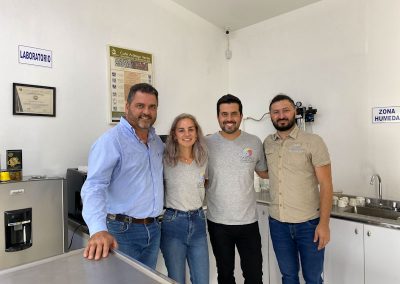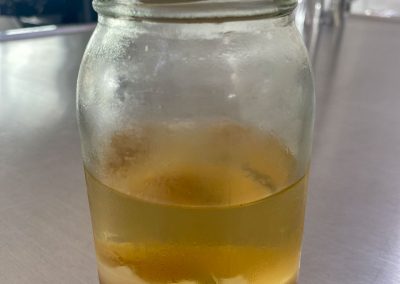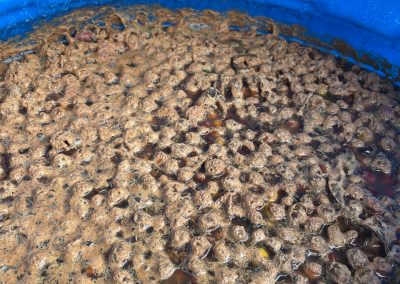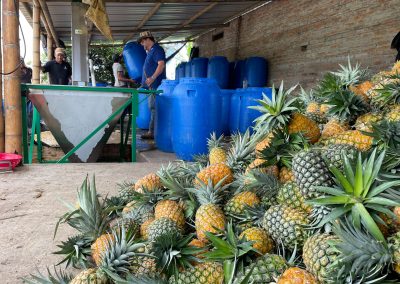Caturra
Nitro Washed
Caturra Nitro – Data Sheet
– Coffee name: Caturra Nitro Washed
– Grade: Product of Colombia
GEOGRAPHIC LOCATION
– Country: Colombia
– Region: Risaralda
– Farm: Finca Milan
– Altitude: 1.400 m.a.s.l
GROWING CHARACTERISTICS
– Varieties: Caturra
– Drying: Solar-Drying
– Processing: Washed
– Fermentation: Nitrogen Culturing
ORGANOLEPTIC CHARACTERISTICS
– Notes: Watermelon, Cantaloupe, Hibiscus, Orange Blossom, Vanilla. Bright, Smooth and Soft
– SCA Score: >88
Farm Info
The Caturra Nitro is produced at Finca Milan, located in the village of el Hogar in the municipality of Pereira in the department of Risaralda. Its owner is Julio Cesar Madrid who comes from a family where coffee-growing has been a tradition, him being the third generation of coffee makers. Finca Milan has been owned by the Madrid family for 40 years, during this time other nearby farms have been added to get to the 50 hectares that they have today.
The Milan farm was originally owned and managed by Mr. Rafael Madrid, who taught and transmitted his love and passion for growing coffee to his son Julio Cesar. Over the years, the farm made the transition from producing traditional coffees to specialty coffees where the contribution of Don Rafael’s experience and tradition, together with the innovation and new knowledge acquired by Julio, allowed the development of unique production and processing techniques that make the coffee from Finca Milan very special.
Today they have developed different fermentation techniques such as traditional Natural, Washed, Honey, and Culturing.
Caturra Nitro Process
Nitrogen fermentation is the next step forward from Culturing fermentation. In 2020 the Coffee Uba team conducted research with the Universidad de los Andes in Colombia, the research was called Metagenomic, metabolomic, and sensory characteristics of fermented coffee (Coffea arabica var. L Castillo) inoculated with microbial starter cultures. This research allowed Julio and his team to understand many things that happen in their fermentations, especially the type of yeasts and bacteria that are part of the fermentations, so they decided to create a stainless steel bioreactor with the ability to retain gases and exchange, to measure temperature and take samples of the leachate/mossto of the fermentation, to provide the best environment for these yeasts and bacteria to work efficiently together with the coffee.
- The nitrogen fermentation starts with a selection of only ripe coffee beans. After the coffee is harvested it is left in the autonomous fermentation stage between 24 and 36 hours.
- After this fermentation step, the coffee is pulped and put into the bioreactor.
- After the coffee enters the bioreactor, our starter and leach cultures are applied and the bioreactor is closed.
- After the bioreactor is sealed, oxygen is removed from the inside and nitrogen is applied.
- from this stage of fermentation, the temperature, acidity, and activity of the fermentation are monitored using the leachate/mossto, until it reaches the desired conditions to know when to stop the fermentation.
- When the fermentation is finished, the coffee is taken for solar drying (it is not washed) and left to dry in the sun until the coffee reaches 25% humidity and then taken to mechanical drying until the coffee reaches a humidity between 10 and 12%
- After the coffee is dried, it is taken to the cellar for a stabilization stage between 15 and 30 days.




